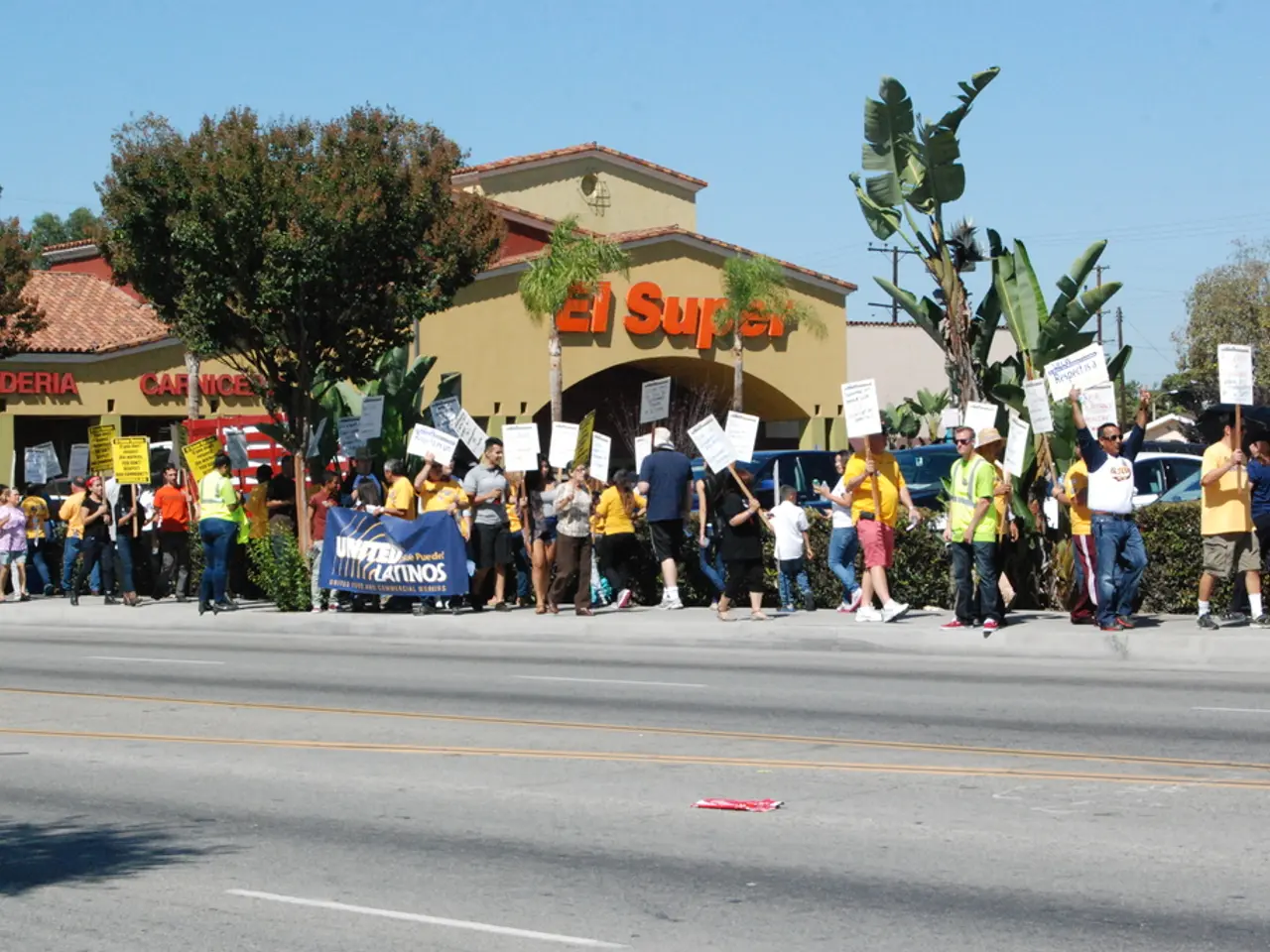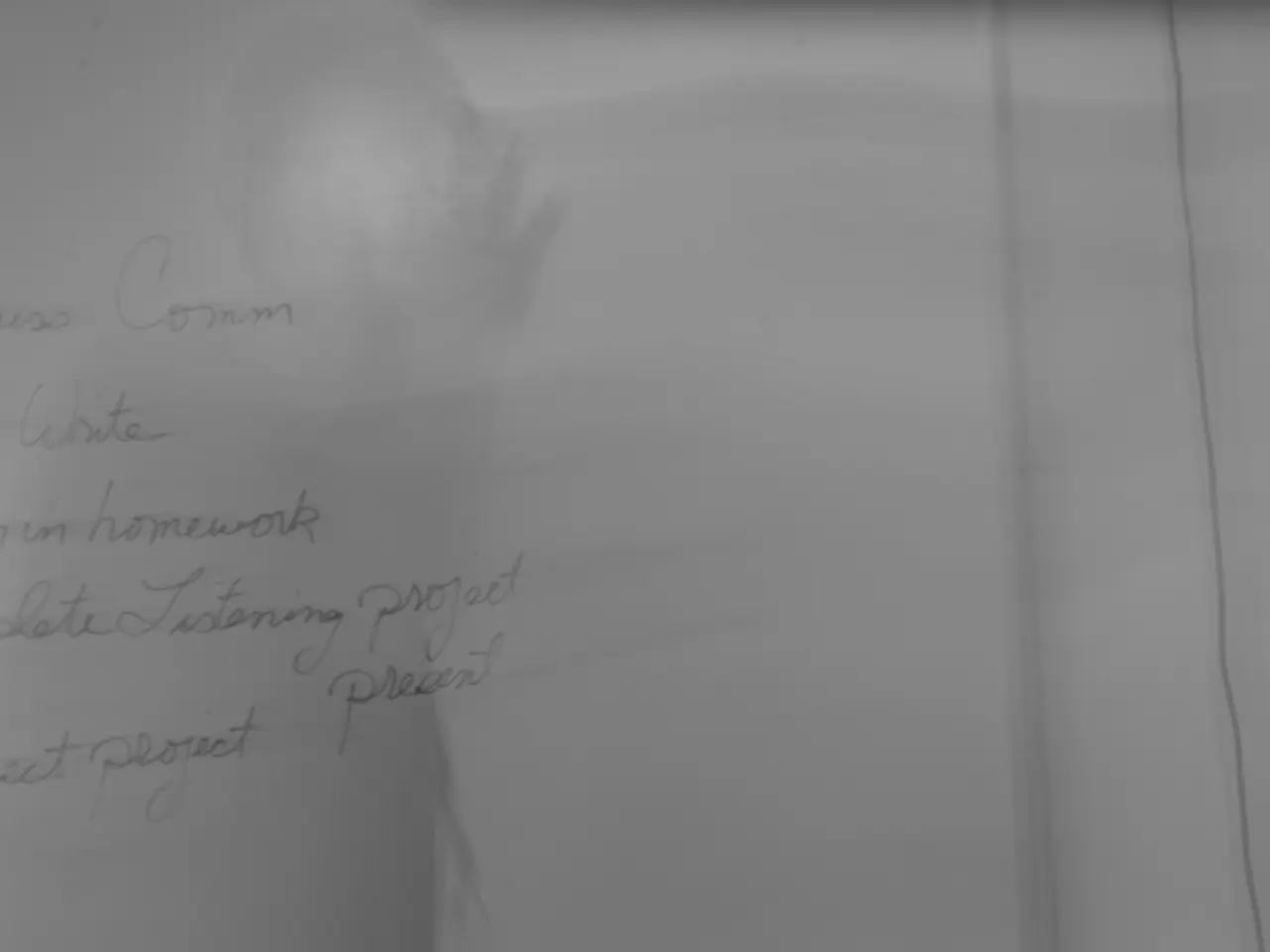Widespread Disapproval for the Republican Bill - Reveals Public Opinion Upon Greater Awareness
In the lead-up to the 2026 midterm elections, the Republican Party is making the vote on a controversial piece of legislation, signed by former President Donald Trump, the defining issue of their campaign. The bill, which makes Trump's 2017 tax cuts permanent and cuts entitlement programs, remains widely unpopular, with support ranging from 27% to 38% in various surveys [1].
Democrats, on the other hand, are promising political revenge and have vowed to oppose the legislation. Awareness of the bill's details is scarce, with only 17% of the public saying they've heard a lot about the legislation's Medicaid cuts [2]. To counter this, Democrats are adopting a new strategy to resonate with audiences who engage more with digital platforms, such as TikTok.
The strategy involves creating short, clear, and relatable content that breaks down the bill's impact on everyday Americans. By showcasing real-life examples of families struggling with healthcare or food security, Democrats aim to make the issue more tangible [3]. TikTok thrives on authentic narratives, and featuring individuals directly affected by the bill's provisions could drive empathy and engagement.
Democrats also plan to highlight the bill's consequences on ordinary people, emphasising that the bill raises the federal deficit by $3 trillion over a decade, potentially leading to more cuts in essential services [3]. Localising the message by pointing out specific impacts on communities, such as Oregon's timber counties and students, can make the message more relevant.
To amplify their message, Democrats are collaborating with TikTok creators who have credibility with younger voters. These influencers will help spread awareness organically using popular formats like duets, challenges, or reaction videos [3].
Democrats are also using fact-based critiques to debunk misleading claims made by the Trump administration. For instance, while the administration claims that low- and middle-income families save $10,000 per year, independent reports show mainly wealthy Americans benefit [3].
In a memo, Democratic groups have argued that the most effective approach to increasing opposition to the bill is to leverage concerns over rising costs. Some Democrats have even blamed journalists for not covering the legislation more [4]. However, Democrats recognise that messaging about the bill on platforms like Bluesky, a Twitter alternative, and podcasts beloved by liberals, will not do much to reach a broader audience [4].
As the midterm electorate is likely to be heavy on older and more educated voters, who tend to pay closer attention to the news, Democrats are encouraging each other to stick to one story, focused on how Republicans are taking things like affordable health care, cheap energy, and food stamps away from voters while handing tax cuts to the wealthy [5].
Two GOP members of Congress, Sen. Thom Tillis of North Carolina and Rep. Don Bacon of Nebraska, have announced their retirement, giving Democrats a better chance of winning their seats in the 2026 midterm [6]. The NRCC, the Republican Party's campaign arm, has promised to use every tool to show voters who stood with them, and who sold them out [7].
As the battle over the bill heats up, both parties are gearing up for a fierce contest, with the stakes high for the 2026 midterm elections.
[1] https://www.pewresearch.org/politics/2018/12/19/most-americans-oppose-the-republican-tax-bill/ [2] https://www.kff.org/medicaid/poll-finding/kff-health-tracking-poll-june-2021/ [3] https://www.politico.com/news/2022/01/27/democrats-tiktok-strategy-trump-tax-cuts-534722 [4] https://www.politico.com/news/2022/01/27/democrats-blame-journalists-for-ignoring-trump-tax-cuts-534722 [5] https://www.politico.com/news/2022/01/27/democrats-strategy-trump-tax-cuts-534722 [6] https://www.reuters.com/world/us/republican-senator-tillis-says-he-wont-run-again-2022-01-25/ [7] https://www.politico.com/news/2022/01/27/democrats-strategy-trump-tax-cuts-534722
- As the Democratic Party counteracts the Republican emphasis on the controversial legislation signed by former President Donald Trump, they are adopting a new strategy to resonate with voters, focusing on the bill's impact on health, environment, and everyday Americans.
- To achieve this goal, Democrats are creating relatable content on digital platforms like TikTok, showcasing real-life examples of families dealing with healthcare and food security issues, while emphasizing potential cuts in essential services like Medicaid.
- In addition to these efforts, Democrats plan to expose the bill's consequences on general news, examining its potential increases in the federal deficit and the subsequent potential cuts in services, with a localized approach focusing on specific communities like Oregon's timber counties and students.





